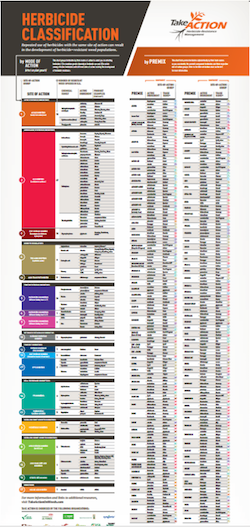Weed resistance to herbicides continues to be a big problem in many states.
For example in Nebraska, six weeds — including common ragweed, marestail, giant ragweed, kochia, common waterhemp, and Palmer amaranth — have evolved resistance to glyphosate in Nebraska.
It’s been reported that more than 5 million acres of Nebraska crop fields are infested with at least one glyphosate-resistant weed.
Management of glyphosate-resistant weeds is now the greatest challenge for Nebraska crop producers and land managers. In selecting a herbicide program, it’s not enough that growers use different herbicides. They also must ensure they are using effective herbicides with different sites of action. This can provide the diversity needed to help slow the further development of herbicide resistance.
More than 90% of corn and soybean fields in Nebraska receive at least one herbicide application every year.
The evolution of herbicide-resistant weeds requires that growers carefully select their herbicides, considering which herbicides belong to which site-of-action group as classified by the Weed Science Society of America.
A numbering system has been developed to help growers select their herbicide program using different sites of action.
Growers don’t need to remember which herbicide belongs to which site of action, but rather can reference an easy-to-use Herbicide Classification chart developed by Take Action Against Herbicide Resistant Weeds. Take Action is an industry-wide partnership between university weed scientists, major herbicide providers and corn, cotton, sorghum, soybean, and wheat organizations to help growers manage herbicide-resistant weeds.
Additional Resources
For more information on this industrywide weed management initiative, see http://takeactiononweeds.com/.
For more information on weed management in Nebraska, including efficacies of various herbicide products against specific weed species, see the Nebraska Extension publication, 2017 Guide For Weed, Disease, and Insect Management in Nebraska. It is available in print and in a digital format from the UNL online Marketplace.
The 2017 Herbicide Classification chart detailing herbicide site- and modes-of-action was recently released. It was developed by the Take Action Against Herbicide-Resistant Weeds industry program.






